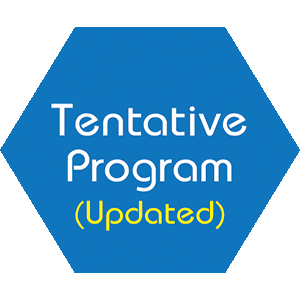
Ahmet Selim Ozkan
Inonu University, Turkey
Title: Sedation with Dexmedetomidine on Klippel Feil Syndrome Infant Patient
Biography
Biography: Ahmet Selim Ozkan
Abstract
Introduction
Klippel Feil Syndrome (KFS) is a congenital malformation which has a failure of segmantation of cervical somites in the 8th weeks of gestation and fusion at least two cervical segments. It is described as the triad of short neck, low posterior hairline and decreased range of neck motions. Especially decreased range of neck motions lead many anesthesiologists to difficult airway management. Dexmedetomidine is used for sedation especially without respiratory depression and for use in very early age group pediatric patients was not observed in reported cases. In this case; we aimed to present succesfull sedation by dexmedetomidine to infant patient who is 65 days aged, diagnosed KFS, limited neck motions and known difficult airway.
Case Report
Infant patient, who is 65 days aged, 4 kg weight, 81 cm height and diagnosed KFS, was scheduled for a neck MRI. On evaluation of patient; short neck, low posterior hairline, thorax deformity and floating finger was found. The mouth opening of patient was normal but the extension of neck was particularly restricted. Systemic examination revealed no other abnormalities. The chest X-ray showed hypoplastic ribs. In medical history of patient; there was intermittent respiratory distress. The patient was taken to the anesthetic preparation room. Standard monitorization (electrocardiography, heart rate, oxygen saturation) were performed and intravenous(IV) line was obtained. After preoxygenation for 5 minutes by facemask, dexmedetomidine infusion was administered by IV route as bolus of 0.5 mcg / kg dose for 10 minutes. Monitorization data and Ramsey Sedation Score of the patient were recorded at intervals of 5 minutes. Ear plugs was inserted into patient for protection of loud sounds in MRI room. After bolus administration, dexmedetomidine infusion was continued for maintenance dose as 0.6 mg/kg/hour. Dexmedetomidine infusion was continued for 20 minutes throughout the procedure. Mean values of monitoring data of the patient were recorded as peripheral oxygen saturation:98% (range 96-99), heart rate:138 beats/min (range 130-171), respiratory rate:26/min(range 23-30). During the process, Ramsey Sedation Score was found 4. Dexmedetomidine infusion was terminated at the end of operation and patient follow-up was continued in the postanesthesia care unit. Patient was sent to service after the full awakeness and the patient was discharged on the same day.
Conclusion
Because of beneficial effects, we approved the administration of dexmedetomidine to 65 days aged infant and diagnosed KFS patient. Sedation is important in such cases which is considered limitted neck motions and difficult airway. We believe that dexmedetomidine is an agent may be preferred an alternative agent ensuring respiratory control in anesthesia procedures for sedation.

